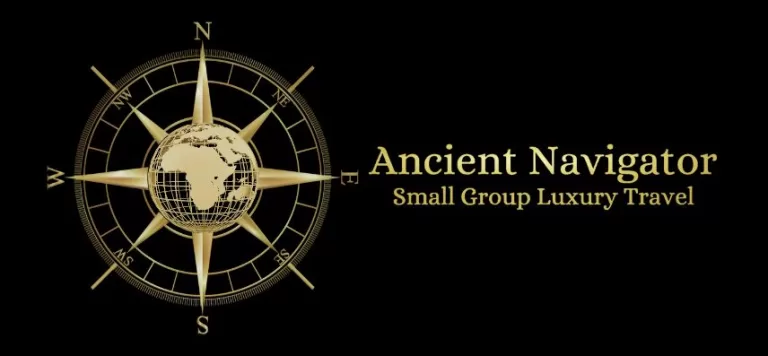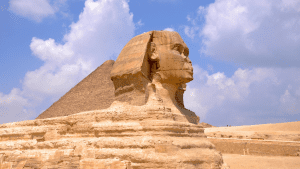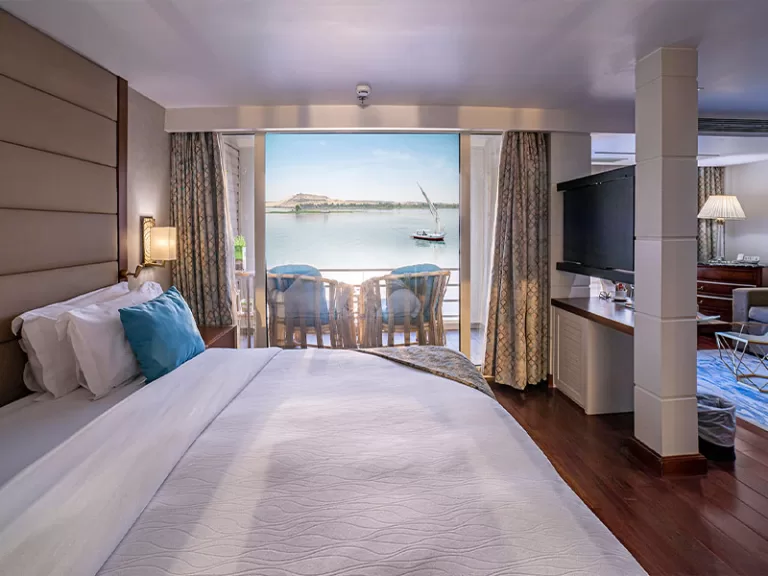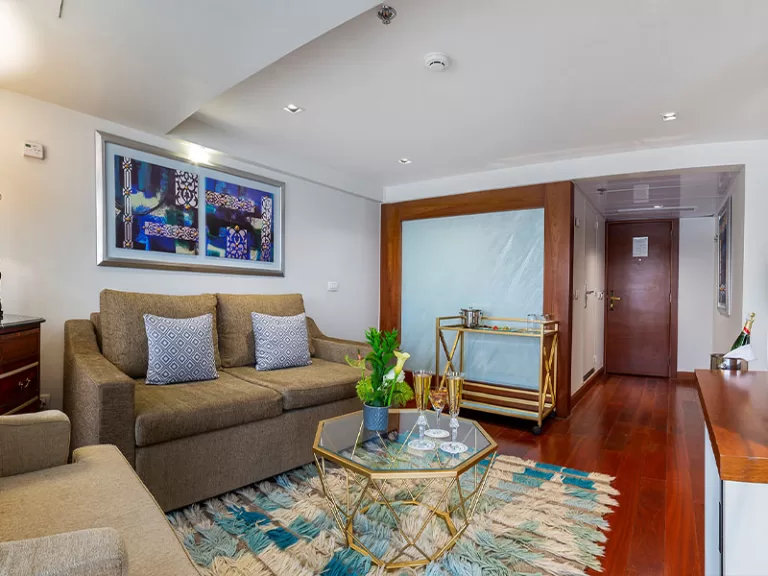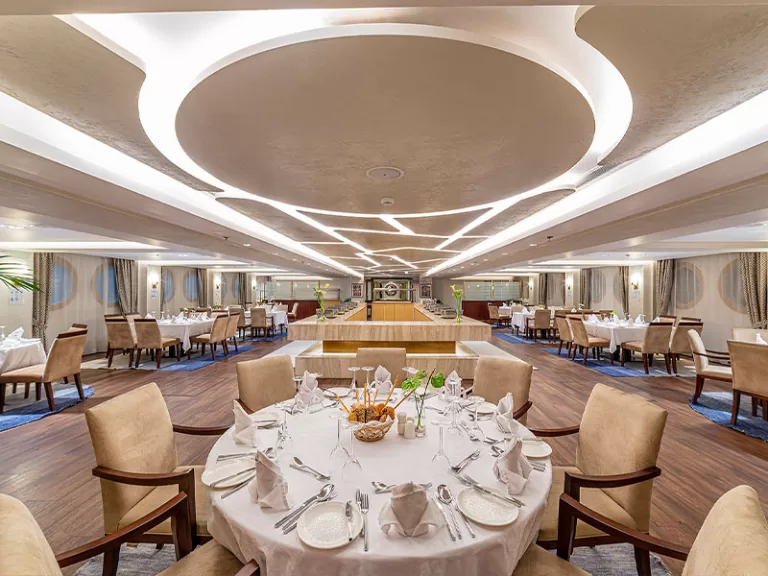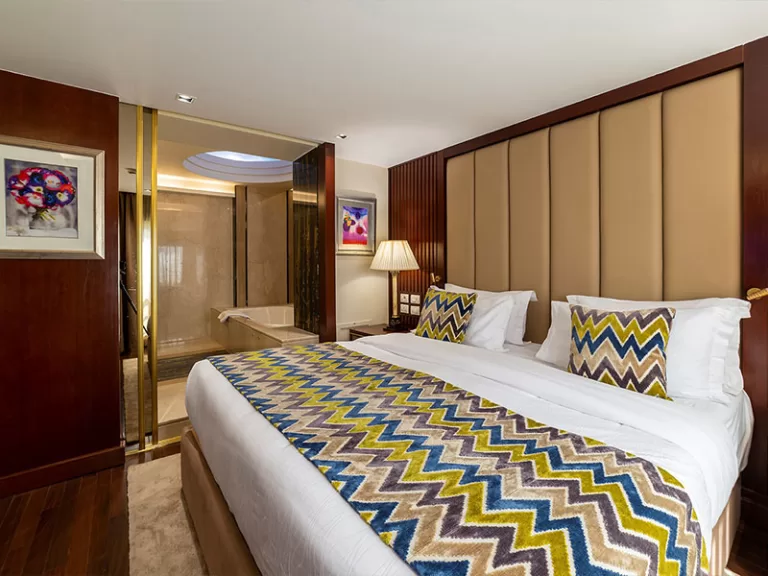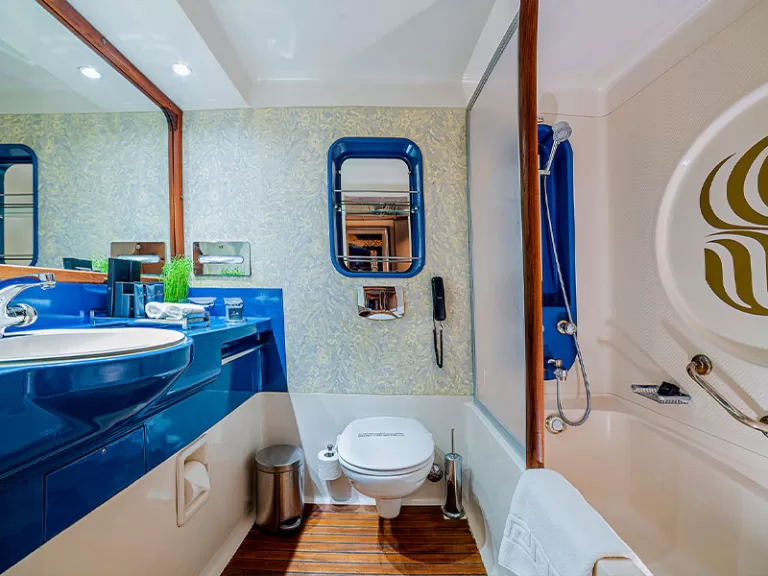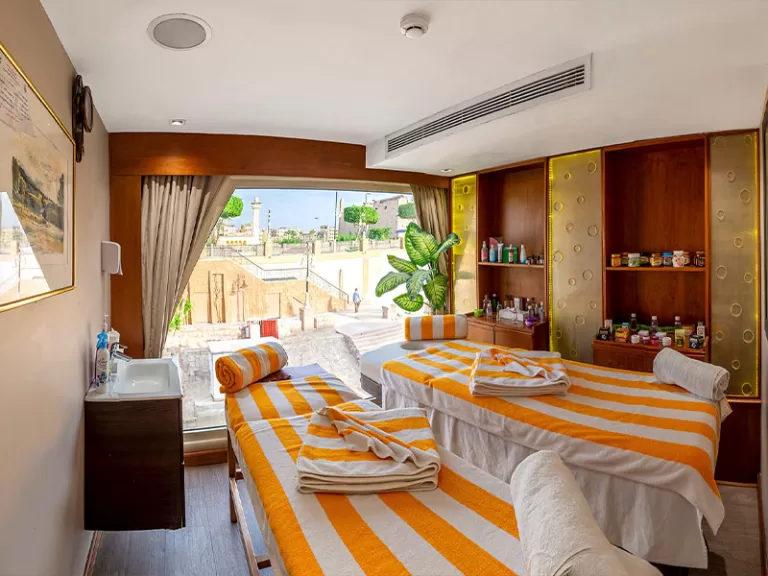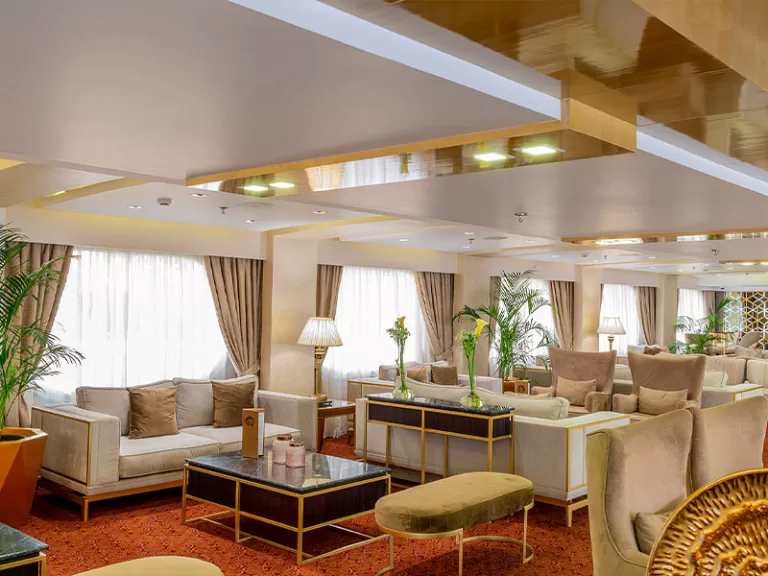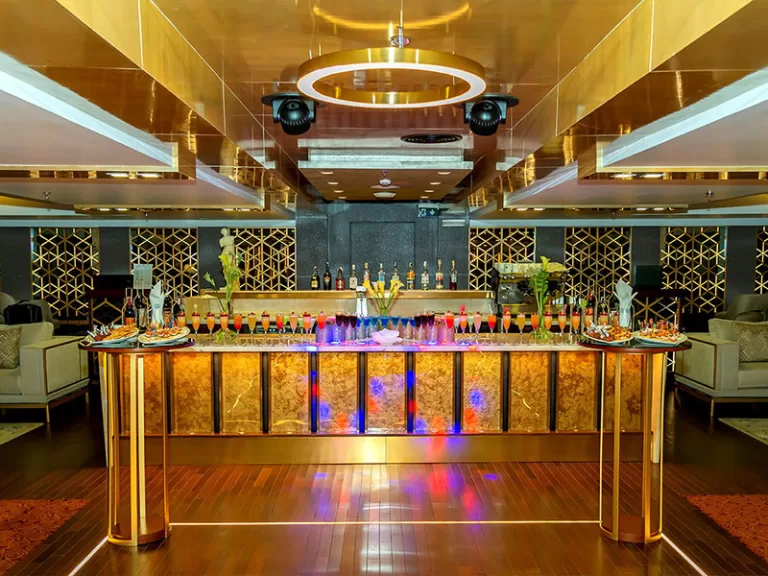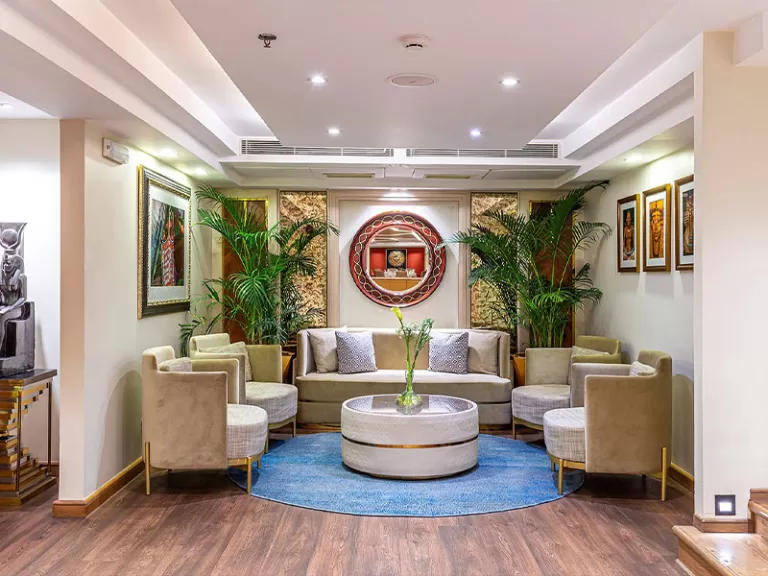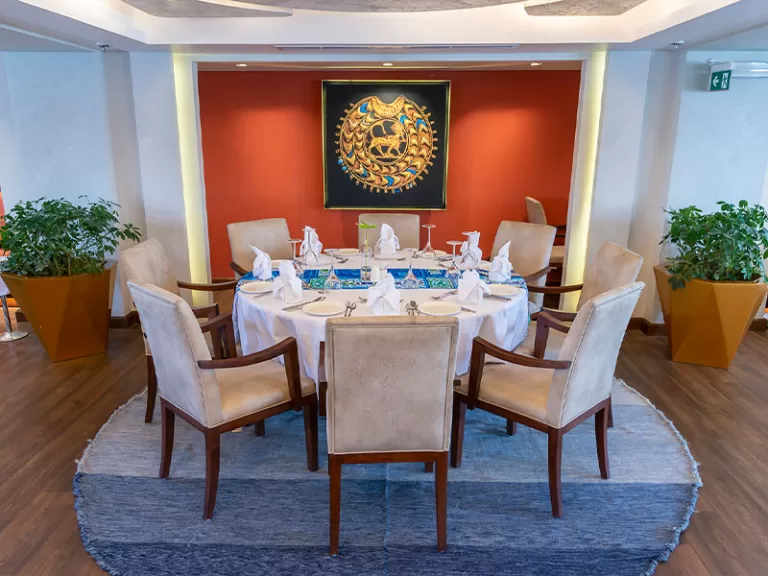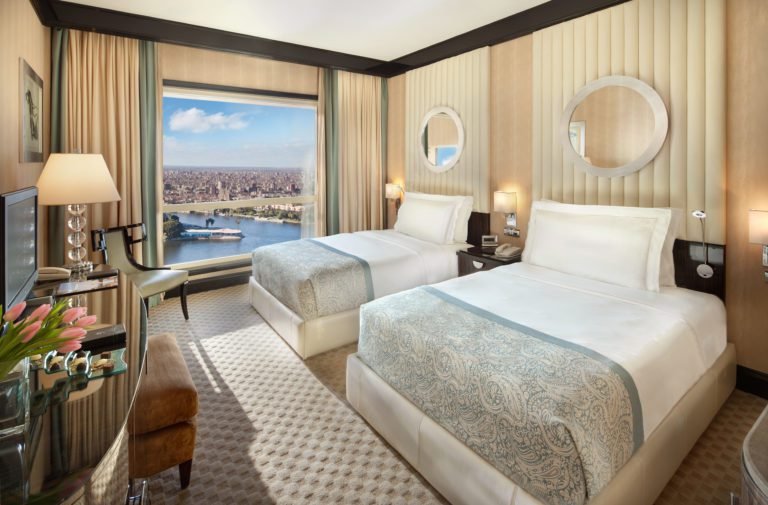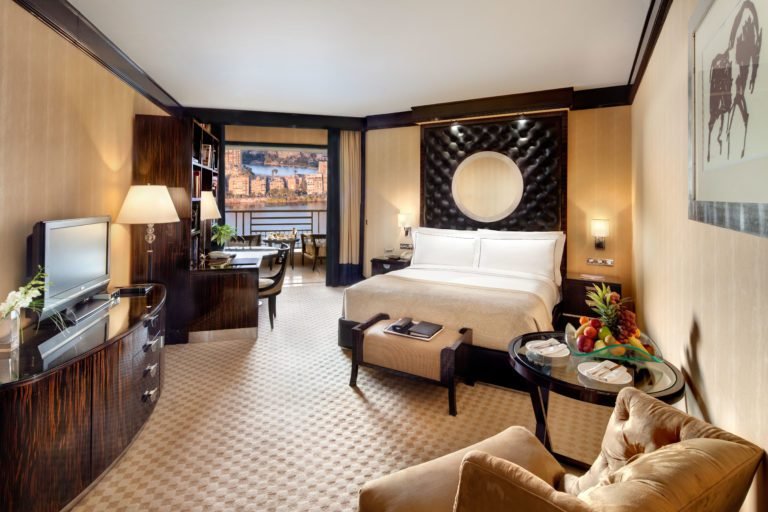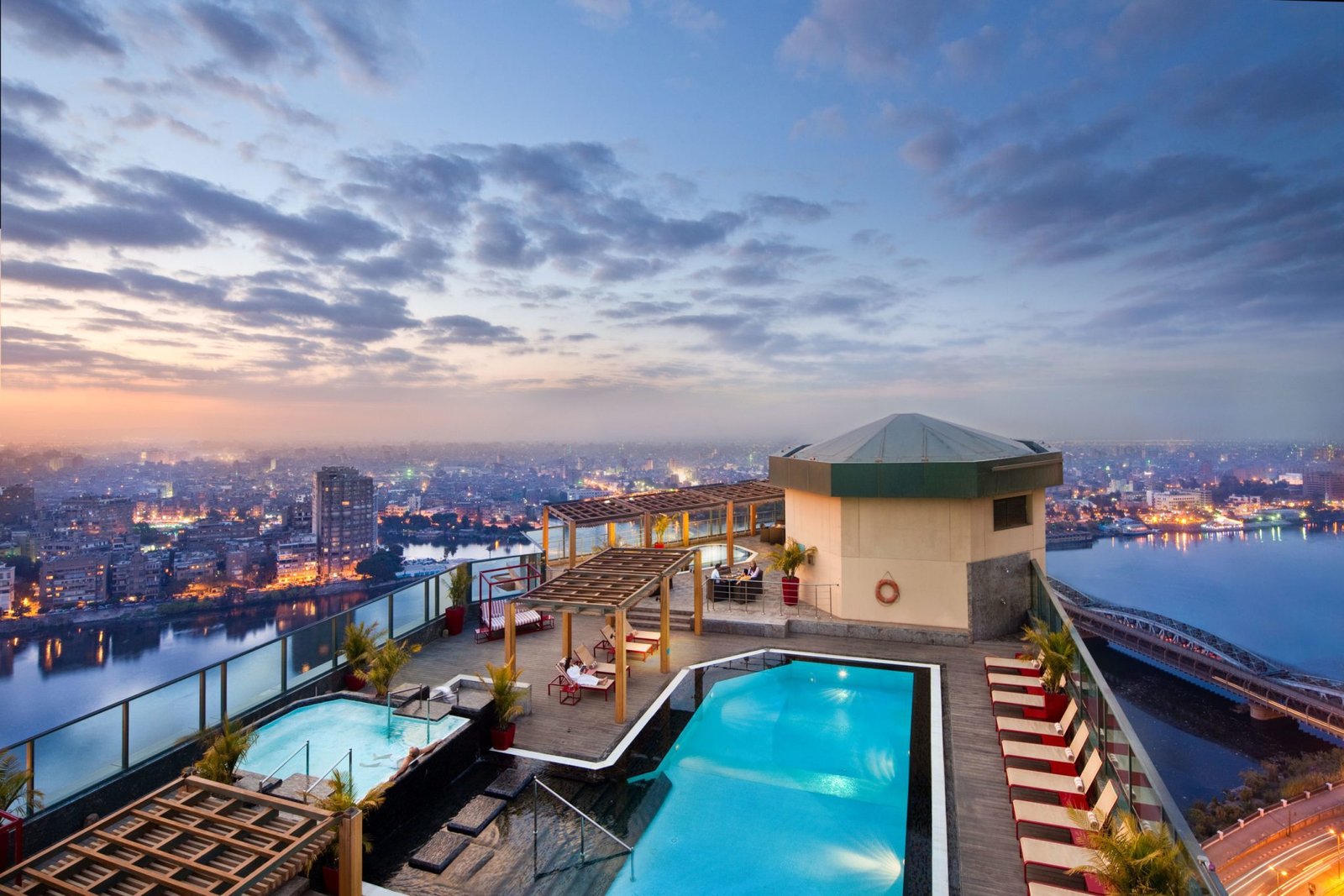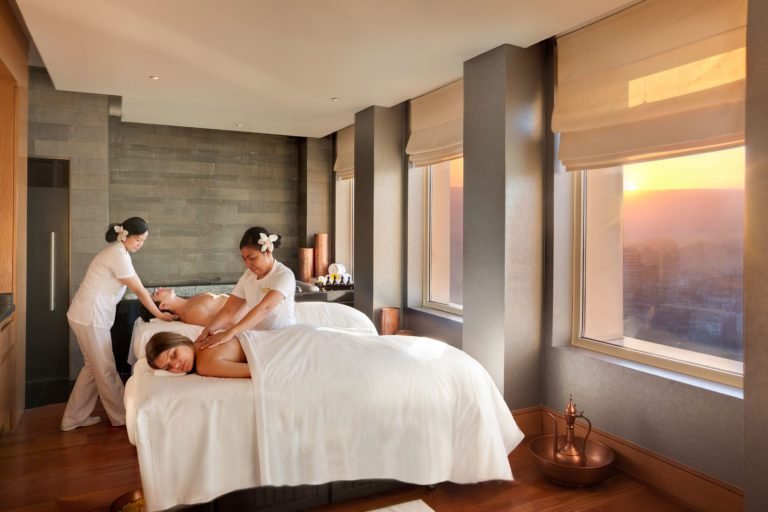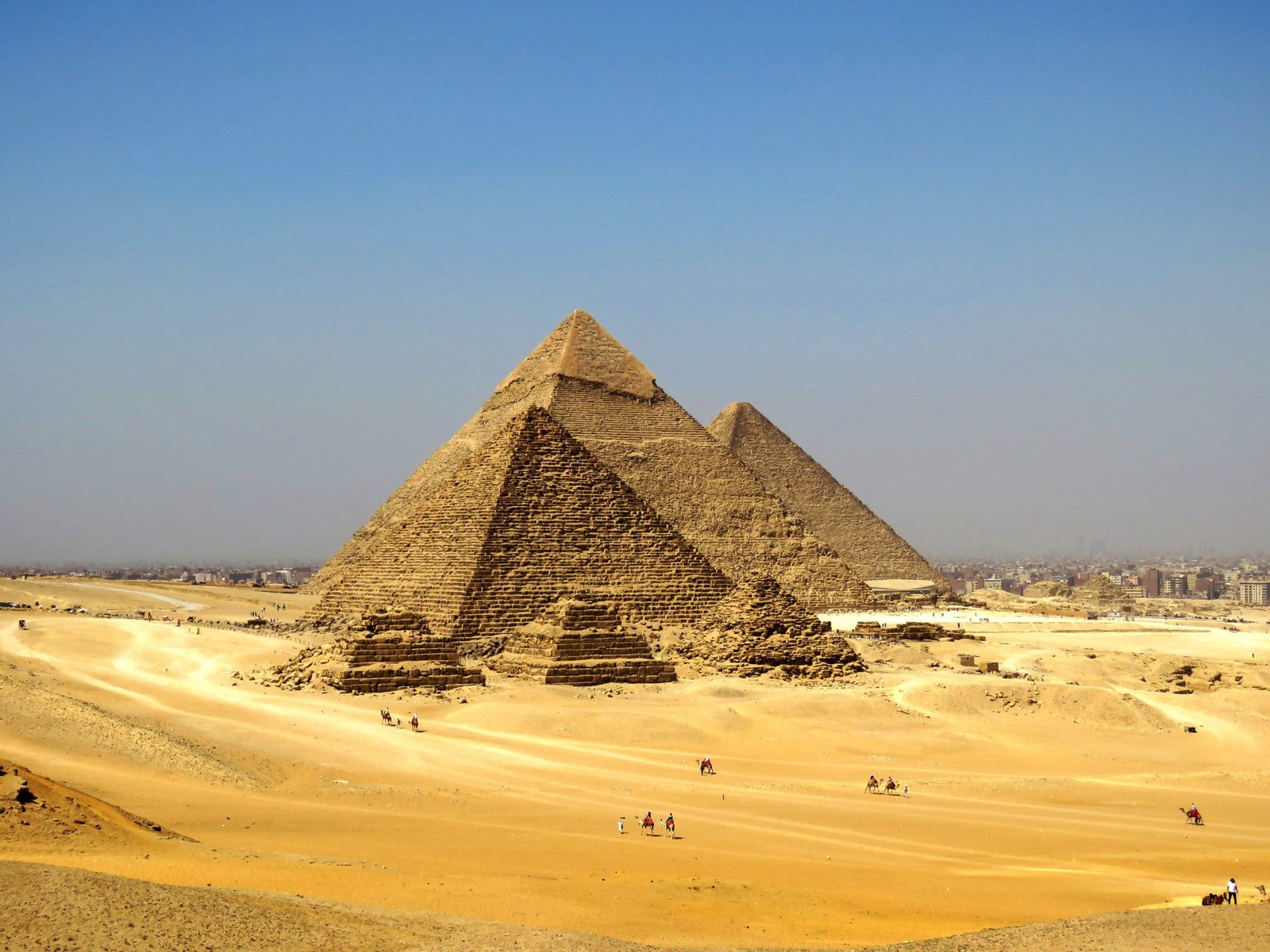
Home » Weekly Blog » Walking with the Pharaohs: An Insider’s Guide to Egypt’s Royal Heritage
Walking with the Pharaohs: An Insider’s Guide to Egypt’s Royal Heritage
Table of Contents
A Journey into Egypt’s Timeless Grandeur
Imagine stepping into a world where towering stone gods cast shadows over the desert sands, where the echoes of an ancient civilization still hum in the air. Egypt, the land of pharaohs, temples, and timeless treasures, beckons travelers with its millennia-old mysteries. For those with a taste for luxury, the experience becomes even more compelling—a seamless blend of ancient wonder and modern elegance.
In this guide, we’re not just taking you on a tour of Egypt; we’re inviting you to walk alongside the pharaohs themselves. From the awe-inspiring temples of Abu Simbel to the sprawling grandeur of Karnak, this is your gateway to Egypt’s royal heritage—through a lens of exclusivity and indulgence. Whether you’re exploring the hidden chambers of tombs with a private guide or floating down the Nile in a plush cruise ship, this is how Egypt was meant to be seen: luxuriously, intimately, and beyond the ordinary.
Ready to uncover Egypt’s royal secrets in the lap of luxury? Let’s begin your exclusive journey.
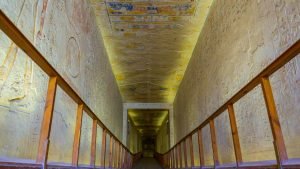
The Luxury of Egyptian Exploration: Where History Meets Opulence
Egypt’s mystique has always drawn adventurers, archaeologists, and dreamers. But in today’s world, the discerning traveler seeks more than just a surface-level experience. They crave depth, personalization, and, most importantly, luxury. Imagine bypassing the tourist crowds to enjoy a private sunrise over the pyramids or staying in a five-star retreat nestled by the Nile. Egypt’s royal heritage deserves to be savored at a royal pace—and in royal style.
The Essence of Luxury Travel in Egypt
Luxury travel in Egypt is not about simply visiting ancient sites—it’s about experiencing them. Picture this: as you walk through the gates of Karnak Temple, it’s not in a crowd of hurried tourists but during a privately arranged tour, guided by an expert Egyptologist who shares not just facts but the hidden stories and secrets of each stone. It’s having the time and space to connect with the majesty of these places, to wander through sacred halls with only the desert wind and your guide’s voice accompanying you.
Luxury travel is also about convenience and comfort. Egypt’s roads can be dusty and chaotic, but you’ll glide through the country in a private car, complete with chilled beverages, air conditioning, and your personal driver. And when you arrive at your destination? Only the finest awaits—boutique hotels, luxurious cruises, and even private helicopter transfers for those moments when only a bird’s-eye view of the wonders will do.
Tailored Experiences: Exploring Egypt Your Way
With a luxury experience, no two journeys are the same. Whether your passion lies in archaeology, photography, or simply soaking in the atmosphere, a tailored Egyptian adventure allows you to explore the country’s rich history in a way that resonates with you. Imagine having access to areas of temples typically closed to the public, or sitting down for an intimate dinner in front of the Great Sphinx as the sun sets behind it.
One of the joys of luxury travel in Egypt is that your itinerary is fluid. Want to stay an extra day at a site that’s captured your imagination? Your concierge can make that happen. Decided you’d like to learn more about hieroglyphics or the art of ancient mummification? Arrangements can be made for a private workshop with an expert. This is your journey, and every step of it is curated to fulfill your desires.
Accommodation and Comfort: Reside Like Royalty
In Egypt, even your downtime can be steeped in history. Imagine retiring for the night in a hotel that overlooks the Nile, where you can sip Egyptian mint tea as the sun sinks below the horizon. Egypt’s luxury accommodations often balance contemporary comforts with historical charm, ensuring that when you’re not exploring, you’re relaxing in the utmost style.
From iconic hotels like the Sofitel Winter Palace in Luxor—where Howard Carter once stayed during his excavations of Tutankhamun’s tomb—to private desert lodges where the stars are your only ceiling, the variety of luxury stays in Egypt is as rich as the history surrounding them. And then, of course, there are the Nile cruises. But we’ll get to those a little later.
Now, let’s begin our journey by stepping into the grandiose world of Ramses II and the awe-inspiring marvel that is Abu Simbel.
Abu Simbel: The Monumental Majesty of Ramses II
As the morning sun rises over the golden dunes of southern Egypt, the statues of Ramses II at Abu Simbel begin to glow, the light casting their enormous features into sharp relief. This is one of Egypt’s most iconic sites, and no photograph can truly capture the staggering scale and beauty of these temples. Built into the mountainside on the banks of Lake Nasser, Abu Simbel is a testament to both ancient engineering genius and the ego of one of Egypt’s greatest pharaohs.
Historical Significance: A Tribute to the Divine Pharaoh
Commissioned by Ramses II in the 13th century BC, Abu Simbel is not just a temple; it is a proclamation of divine power. The larger temple, dedicated to Ramses himself, features four colossal statues of the pharaoh seated on his throne, each standing over 65 feet tall. It was constructed to honor Ramses as a god-king and to demonstrate Egypt’s dominance over its neighbors, particularly Nubia.
But Abu Simbel is not just about power; it’s also about precision. Twice a year, on February 22 and October 22, the sun aligns perfectly to illuminate the innermost sanctuary of the temple, lighting up the statues of Ramses and the gods seated beside him. This solar phenomenon was carefully calculated by the temple’s architects and continues to astound visitors today.
What to See: The Hidden Treasures of Abu Simbel
The sheer scale of Abu Simbel is overwhelming, but its true magic lies in the details. Inside the main temple, you’ll find intricately carved reliefs depicting Ramses’ military victories, most famously the Battle of Kadesh. As you wander through the chambers, you’ll also discover smaller statues, hidden shrines, and inscriptions that offer glimpses into the life and beliefs of ancient Egyptians.
Next to Ramses’ temple is the smaller, but equally beautiful, Temple of Hathor, dedicated to Ramses’ beloved queen, Nefertari. The statues here, although smaller than those of Ramses, are rare in that they depict the queen as nearly equal in size to the pharaoh—an unusual honor in ancient Egyptian art.

Karnak Temple: The Grandeur of Thebes
Karnak is more than just a temple—it’s a city of stone. Covering over 200 acres, this sprawling complex is one of the largest and most significant religious sites in the world. As you step through its gates, you are entering a place that was at the very heart of ancient Egyptian life and spirituality.
Historical Significance: A Tribute to Amun-Ra
The Karnak Temple complex was built over a period of 2,000 years, primarily to honor Amun-Ra, the king of the gods. But it’s also a testament to the many pharaohs who left their mark on Egypt’s history. From the grand Hypostyle Hall with its 134 towering columns to the sacred lake used for ritual purification, Karnak is a monument to the power and wealth of ancient Thebes (modern-day Luxor).
Karnak was not only a place of worship but also a political and economic hub. Pharaohs from Hatshepsut to Ramses II contributed to its construction, each trying to outdo their predecessors with ever-grander structures and decorations. This is why Karnak is sometimes referred to as a “chronicle in stone”—it tells the story of Egypt’s most powerful rulers, each inscription and monument a testament to their legacy.
What to See: Exploring the Temple Complex
The scale of Karnak can be overwhelming, but there are a few must-see highlights. The Great Hypostyle Hall is perhaps the most famous part of the complex, with its forest of massive columns reaching heights of nearly 70 feet. As you stand among these stone giants, it’s easy to feel as if you’ve been transported to another time.
Other highlights include the Avenue of Sphinxes, which once connected Karnak to Luxor Temple, and the obelisks of Thutmose I and Hatshepsut, which soar into the sky, their inscriptions still visible after thousands of years. The Sacred Lake, where priests would cleanse themselves before rituals, offers a quiet space for reflection in the shadow of the surrounding temples.
Luxor: The Open-Air Museum of Ancient Egypt
Luxor, often referred to as the “world’s greatest open-air museum,” is home to some of Egypt’s most spectacular ancient monuments. Once the capital of the pharaohs during the New Kingdom, Luxor’s landscape is dominated by the temples, tombs, and treasures that make it a bucket-list destination for history lovers and adventurers alike.
Historical Significance: The Heart of Royal Egypt
The city of Luxor is essentially the modern-day site of ancient Thebes, the capital during Egypt’s New Kingdom period. This is where pharaohs like Tutankhamun, Seti I, and Hatshepsut ruled, and where many of them were buried in the Valley of the Kings. Luxor is home to not only grand temples like Karnak and Luxor Temple but also vast necropolises, including the Valley of the Queens and the workers’ village at Deir el-Medina.
What to See: A Tapestry of History and Splendor
A visit to Luxor is like stepping into a time machine. Begin with the Valley of the Kings, where the tombs of over 60 pharaohs are hidden deep within the cliffs. Here, you can descend into the intricately decorated burial chambers of some of Egypt’s most famous rulers, including Tutankhamun. The colors on the walls are astonishingly vivid, despite being over 3,000 years old, and each tomb tells its own story of the journey to the afterlife.
Next, visit the Mortuary Temple of Hatshepsut, an architectural masterpiece set against the dramatic backdrop of the cliffs at Deir el-Bahari. The temple’s terraces and colonnades are a testament to the vision of Egypt’s first female pharaoh, and your guide will fill you in on the intrigue and drama of her reign.
Don’t miss the Colossi of Memnon, two towering statues of Amenhotep III that have stood guard over the desert for millennia. And, of course, Luxor Temple itself—a beautiful, smaller counterpart to Karnak, located right in the heart of the city.

Nile Cruises: The Royal Route
The Nile River has been the lifeblood of Egypt for thousands of years, and there’s no better way to explore the country’s ancient sites than by cruising its tranquil waters. A Nile cruise is more than just a mode of transportation—it’s a journey through time, offering a glimpse of life along the river just as it was in the days of the pharaohs.
Historical Significance: The Nile as Egypt’s Lifeline
The Nile was central to the development of Egyptian civilization. It provided water, food, and transportation, and its annual flooding was essential for agriculture. The river was also seen as a spiritual pathway, with the east bank representing life and the west bank associated with death. This is why so many of Egypt’s tombs and mortuary temples are located on the west bank of the Nile, while temples dedicated to the gods are found on the east bank.
For the pharaohs, the Nile was not just a river—it was a royal highway. Pharaohs traveled up and down the river on ornate boats, visiting temples and overseeing the construction of their monuments. Today, you can follow in their footsteps (or wake) with a luxurious Nile cruise.
What to Experience: A Journey in Elegance
A luxury Nile cruise is about more than just seeing the sights—it’s about experiencing them in style. You’ll sail between Aswan and Luxor, stopping at key sites along the way, including the temples of Kom Ombo and Edfu. But the real magic of a Nile cruise is the journey itself. As you glide along the water, you’ll pass palm-lined villages, ancient ruins, and lush farmland, all set against the backdrop of the desert.
Onboard, you can expect world-class amenities, from spacious cabins with private balconies to gourmet dining featuring both Egyptian and international cuisine. Many luxury cruises also offer onboard lectures from Egyptologists, evening entertainment, and spa services to help you unwind after a day of exploration.
Alexandria: The Mediterranean Jewel of Egypt
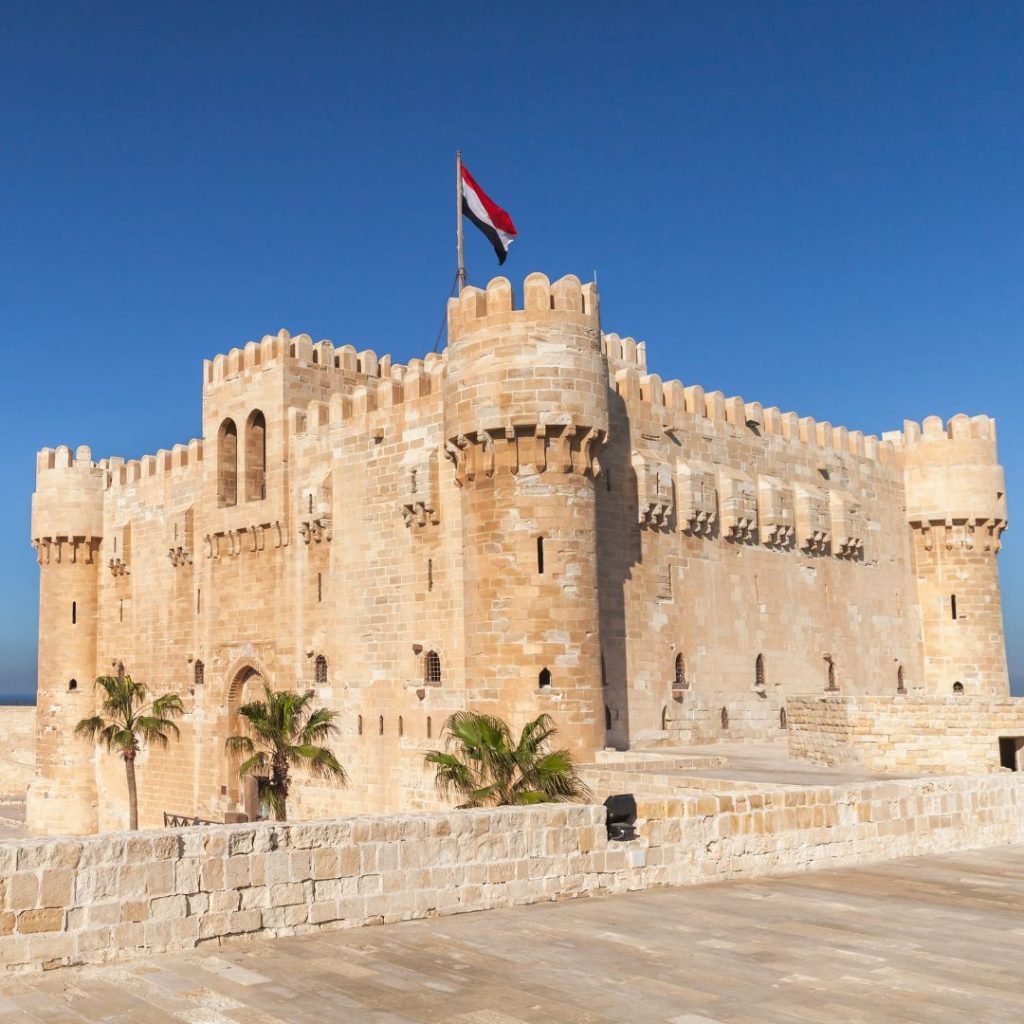
While most travelers focus on Egypt’s pharaonic history, the country’s royal heritage extends well into the Hellenistic and Roman periods, and nowhere is this more evident than in Alexandria. Founded by Alexander the Great and ruled by the Ptolemies—including the famous Cleopatra—Alexandria is a city that has always been at the crossroads of culture, power, and innovation.
Historical Significance: Cleopatra’s City
Alexandria was once the capital of Egypt, and under the Ptolemies, it became a center of learning, culture, and political power. The city was home to the Great Library of Alexandria, one of the largest and most famous libraries of the ancient world, as well as the Lighthouse of Alexandria, one of the Seven Wonders of the Ancient World.
Cleopatra, the last pharaoh of Egypt, ruled from Alexandria, and her dramatic reign—marked by alliances with Julius Caesar and Mark Antony—has captivated the world for centuries. Today, while much of ancient Alexandria lies submerged beneath the Mediterranean, the city still holds many treasures for those interested in Egypt’s royal past.
What to See: A Blend of Ancient and Modern
Although the ancient city of Alexandria was largely destroyed by earthquakes and other disasters, there are still several sites that offer a glimpse into its royal past. The Catacombs of Kom el Shoqafa, for example, are an impressive Roman-era necropolis that blends Egyptian and Greco-Roman art and architecture.
Another highlight is the Citadel of Qaitbay, a 15th-century fortress built on the site of the ancient Lighthouse of Alexandria. While the lighthouse itself is long gone, the fortress offers stunning views of the Mediterranean and the modern city of Alexandria.
No visit to Alexandria would be complete without a stop at the modern Bibliotheca Alexandrina, a strikingly modern library and cultural center that pays homage to the city’s ancient role as a center of learning. Inside, you’ll find rare manuscripts, exhibitions, and state-of-the-art facilities that continue Alexandria’s legacy as a hub of knowledge and innovation.
Practical Tips for Travel in Egypt
Best Time to Visit: Seasons of Splendor
Egypt is a year-round destination, but the best time to visit is during the cooler months between October and April. During this period, the temperatures are mild, making it more comfortable to explore the desert and the ancient sites. If you’re planning a luxury trip, this is also when many of the high-end accommodations and cruises offer their best services.
However, if you’re looking to avoid the crowds, consider traveling during the shoulder seasons in September or May. While temperatures may be slightly higher, you’ll have more of Egypt’s wonders to yourself.
What to Pack: Style Meets Functionality
When packing for a luxury trip to Egypt, it’s important to strike a balance between comfort and style. Lightweight, breathable fabrics are essential for staying cool in the desert heat, but you’ll also want to bring more formal attire for evenings at upscale hotels or private dinners. A wide-brimmed hat, sunglasses, and sunscreen are must-haves for daytime excursions, while a light scarf or shawl is useful for covering up when visiting religious sites.
Don’t forget to pack comfortable walking shoes for exploring the temples and tombs, but you may also want a pair of stylish sandals or loafers for more relaxed settings.
Security and Comfort: Travel Like a Pharaoh
While Egypt is generally a safe destination for tourists, traveling with a luxury tour provider offers an added layer of security and comfort. Your guides and drivers will be experienced professionals who know how to navigate Egypt’s cities and sites with ease. Many luxury providers also offer concierge services that can assist with everything from restaurant reservations to arranging private transfers and special experiences.
It’s also worth considering travel insurance that covers any unforeseen circumstances, ensuring that your trip remains as smooth and stress-free as possible.
Embark on Your Royal Journey

Egypt’s royal heritage is one of the most awe-inspiring in the world, and experiencing it through the lens of luxury travel adds a layer of depth and indulgence that will stay with you long after you’ve returned home. From the towering statues of Ramses II at Abu Simbel to the sunlit columns of Karnak, and the tranquil waters of the Nile, Egypt’s wonders are waiting to be discovered—and you deserve to discover them in style.
So, are you ready to walk with the pharaohs? Whether you dream of exploring hidden tombs, dining under the stars at the foot of a temple, or sailing down the Nile in royal fashion, your once-in-a-lifetime Egyptian adventure awaits. Let your journey through Egypt’s royal heritage be as grand and unforgettable as the history that has captivated the world for centuries.
Let us help you plan your ultimate Egyptian escape. Luxor, Cairo, Abu Simbel, and the timeless Nile are calling—and it’s time to answer.

